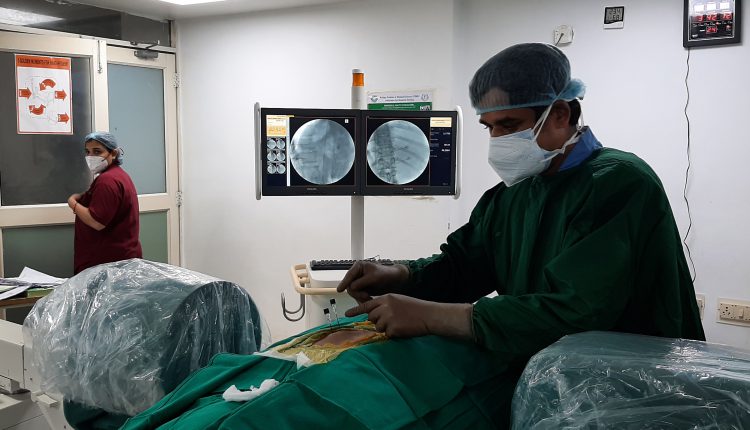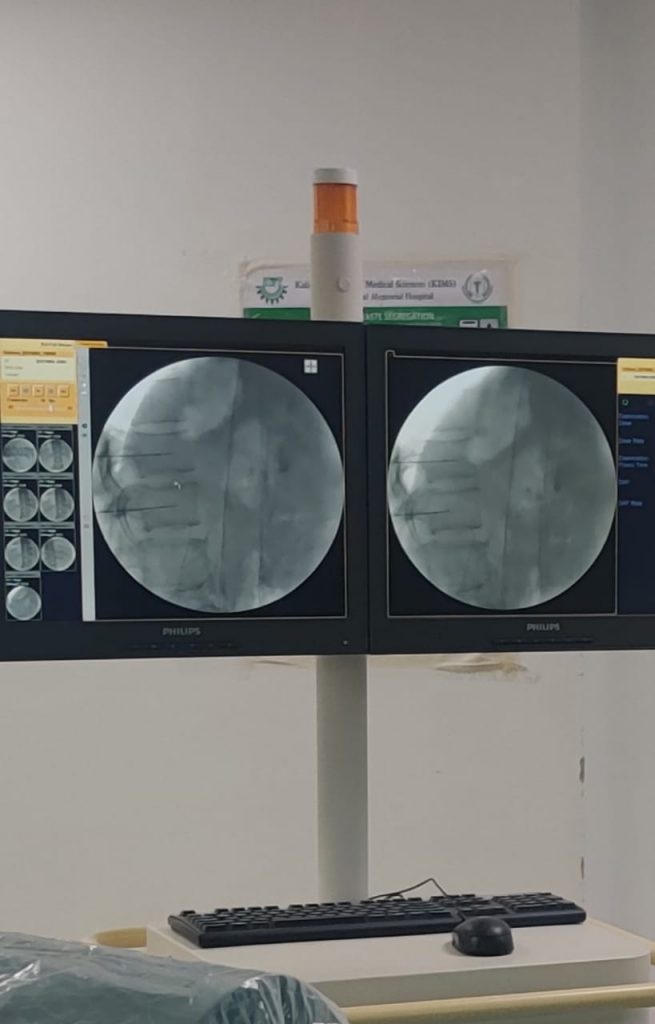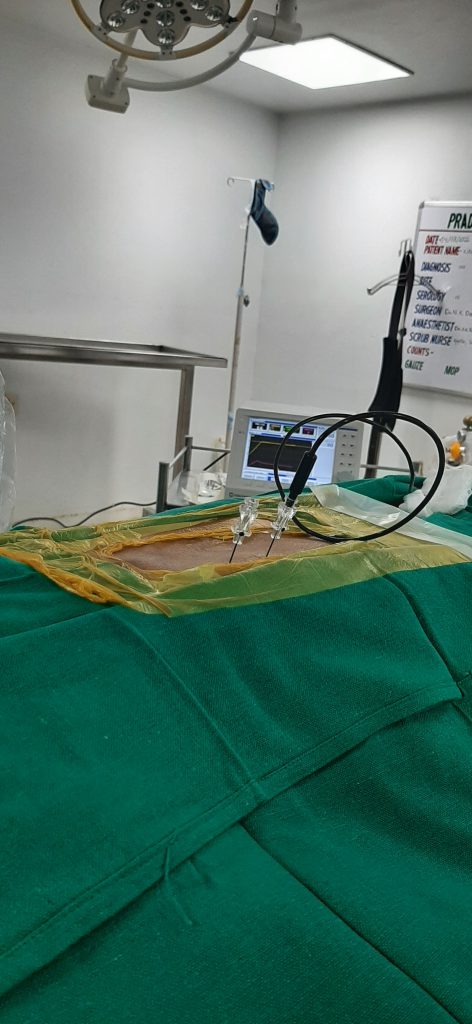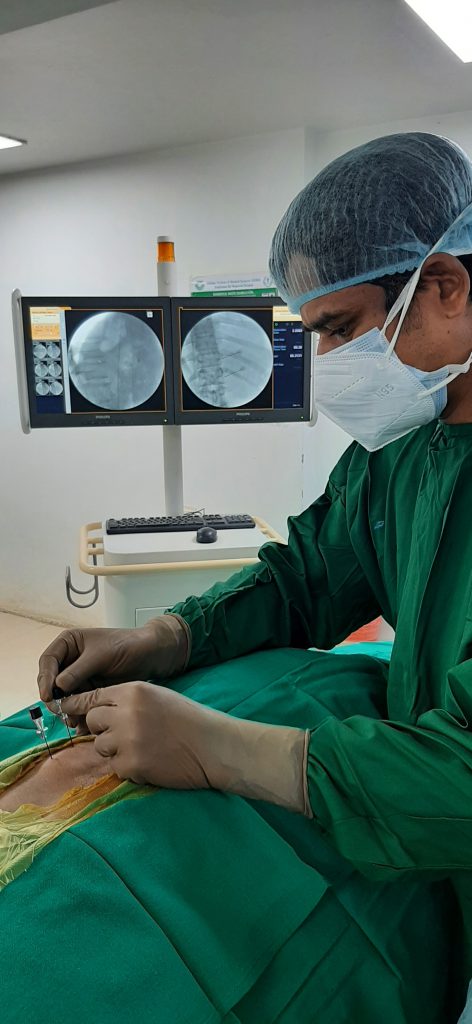An Advanced Interventional Procedure for the First Time in KIMS Radiofrequency Ablation of Splanchnic Nerves for Intractable Abdominal Pain from Chronic Calcific Pancreatitis Treated Successfully
Suffering from chronic intractable abdominal pain with nausea and vomiting for the last 4 years, a 35 year man visited the Pain Clinic, KIMS. He was diagnosed with “Chronic calcific pancreatitis” by GI surgeons based on his clinical history and CT scan of the abdomen. Prior to visiting KIMS, he had undergone “Redo Frey’s procedure (surgery for chronic pancreatitis)” in May 2021. However, the patient did not experience any pain relief following the surgery. Unfortunately, medications were of little help in managing his pain. Before visiting KIMS, he was not able to eat or drink much as this would increase his pain and cause vomiting. This had led to pre-renal azotemia with slightly high urea and creatinine.

The Treatment Team comprising Doctors, Nurses and Staff of Pain & Palliative Care Department of KIMS led by Dr. Rajendra Sahoo, Senior Consultant- Interventional Pain Management & Palliative Care, planned for “Radiofrequency ablation of the splanchnic nerves” at T11 and T12 vertebral levels as a therapeutic minimally invasive interventional procedure in OT under local anesthesia. The procedure was carried out in a prone position with C-arm guidance. Two 22 G 10 cm RF cannulae with 10 mm active curved tip was introduced under oblique C-arm view targeting the lateral border of the vertebral body and then sensory and motor simulations were carried out at 50 Hz and 2 Hz respectively where patient reported concordant pain on sensory stimulation and no muscle contraction with motor stimulation. This indicated the appropriate RF tip position next to the target nerve. After that 2 RF ablations were done at 85 degree for 90 seconds and the same procedure was repeated on the other side (images attached below).
The procedure was successful without any complications. The Patient reported complete pain relief from POD 1 onwards and was discharged in a happy note from the hospital. He was able to tolerate food from POD 1 onwards and that summarized the story.





